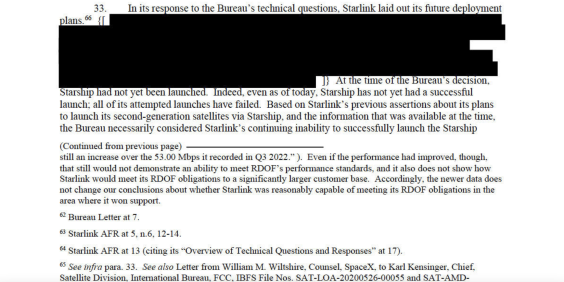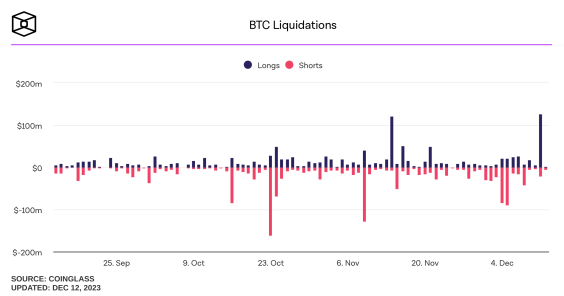This is not investment advice. The author has no position in any of the stocks mentioned. Wccftech.com has a disclosure and ethics policy.
Nvidia Corporation (NASDAQ: NVDA) has reported a non-GAAP EPS of 53 cents, easily beating out analysts’ expectation of 37 cents per share. With a beat of 16 cents, the chip manufacturer has reported an impressive quarter and is continuing its streak. Analysts expected Nvidia to report revenues of 1.35 Billion, which the company was able to beat by a handy $80 Million for a total reported second quarter revenue of $1.428 Billion.
During the first half of fiscal 2017, Nvidiaspent$509 million in share repurchases and $124 million in cash dividends. Nvidia will pay its next quarterly cash dividend of $0.115 per share on September 16, 2016, to all shareholders of record on August 25, 2016.
In the wake of such a strong quarter and the fact that Nvidia holds 81% of the GPU market share (according to Jon Peddie research) the company’s share price rose to a record high of $62 and is currently trading After-hours (at the time of writing) at around $61.7. Keep in mind however, that the past few months have shown an incredible period of growth in Nvidia’s stock and a correction to support levels could potentially see the price droppingdue to herding behavior.
Things to remember about Nvidia's (NASDAQ: NVDA) current quarter
This quarter marks a new era for the chip manufacturers AMD and Nvidia – where the transition from the 28nm node to a sub-20nm node is made (which in the case of Nvidia is 16nm FinFET+). The company has recently introduced the first generation of FinFET GPUs with GeForce branding. This is an upgrade a long time in the making since we have been stuck on 28nm for quite a few years (since 2012). The performance of these GPUs exceeded expectations and have been met with unprecedented demand in the high end segment. However:
The company has yet to match competition below the $250 price point.It has been trying to make headway into the autonomous vehicle industry which is currently dominated by Mobileye. This is something that stands to change following the recent divorce of Tesla and Mobileye.While the company's iron grip on the mainstream GPU industry is impressive, it needs to maintain its bullish momentum in other sectors to ensure proper diversification of risk.Deep Learning is something Nvidia(NASDAQ: NVDA) GPUs are being widely implemented in and this lead is being maintained thanks to introduction of Pascal architecture with CuDNN 5The downside risk of this company is limited in nature, however, it is still vulnerable to disruptions that originate from TSMC (including but not limited to Apple being given priority for orders on the 16nm node or bad yields both of which are likely).
Specifically regarding the sub-$250 price point, the question was put to CEO Jen-Hsun Huang on the investors conference call asking whether, given his earlier statement that all Pascal chips had taped out and ramped, was Nvidia ceding the sub-$250 market to competition. The answer to that was that although all Pascal chips had taped out and ramped, they had not yet all been introduced. This of course is something readers of our site will already likely be familiar with in our previous reporting on a potential cut down 1060 3GB (which may also be introduced as the 1050).
Nvidia is major supplier of chips to car manufacturers, but the vast majority of these go into the infotainment systems. The self-driving sector is something that Nvidia has not yet been very successful in breaking into. To properly diversify away from the risk of a possibly shrinking PC market (as alleged by Intel), Nvidia is attemptingto establish itself as a provider of autonomous driving technology - where it is currently trying to dislodge the well established Mobileye.
Nvidia (NASDAQ: NVDA)'s GPGPU implementation is much more flexbile than Mobileye and their GPUs have a much higher MAC/s rate (the relevant metric for self driving chips) however, due to the lack of an established ecosystem, they have not been particularly successful thus far. Keep in mind however that the B2B market for production runs of things like cars are likely multi-year negotiating efforts with huge terms on both sides to be agreed before deals of this nature get signed and announced.
Deep Learning and AI is something the world has just started to foray into, and one of Nvidia's biggest intrinsic strengths is that its GPUs are the go-to standard for deep learning clusters. Of course, how much of their revenue comes from these clusters and after taking into account upgrade cycles the impact of this particular upside diminishes somewhat.
 GPU Business revenue was $1.20 billion, up 25 percent from a year earlier and up 11 percent sequentially, reflecting strength in datacenter and GeForce® gaming GPU revenue. Tegra Processor Business revenue of $166 million was up 30 percent year on year and up 4 percent sequentially, reflecting growth in Tegra automotive. Gaming platform revenue was $781 million, up 18 percent from a year ago, driven by Pascal™ gaming GPU sales across all regions.
GPU Business revenue was $1.20 billion, up 25 percent from a year earlier and up 11 percent sequentially, reflecting strength in datacenter and GeForce® gaming GPU revenue. Tegra Processor Business revenue of $166 million was up 30 percent year on year and up 4 percent sequentially, reflecting growth in Tegra automotive. Gaming platform revenue was $781 million, up 18 percent from a year ago, driven by Pascal™ gaming GPU sales across all regions.
"Strong demand for our new Pascal-generation GPUs and surging interest in deep learning drove record results," said Jen-Hsun Huang, co-founder and chief executive officer, Nvidia. "Our strategy to focus on creating the future where graphics, computer vision and artificial intelligence converge is fueling growth across our specialized platforms -- Gaming, Pro Visualization, Datacenter and Automotive....We are more excited than ever about the impact of deep learning and AI, which will touch every industry and market. We have made significant investments over the past five years to evolve our entire GPU computing stack for deep learning. Now, we are well positioned to partner with researchers and developers all over the world to democratize this powerful technology and invent its future,"
During the earnings call, CEO Jen-Hsun Huang fielded a question about the penetration of Pascal thus far into the gaming segment. In answering the question, he stated that of the ~80 million GeForce cards currently in use, only about a third of those had even upgraded to Maxwell and as such Nvidia sees a huge upgrade potential still in the market to Pascal given that initial penetration is extremely small into their overall footprint, the implication of course being that just under two thirds of users are still on Kepler or older cards.
Professional visualization revenue from Quadro® was a record $214 million, up 22 percent year over year and up 13 percent sequentially. Datacenter revenue, including Tesla® and Nvidia GRID™, was a record $151 million, up 110 percent from a year earlier and up 6 percent sequentially, amid strong demand for GPU acceleration related to deep learning. Automotive revenue from infotainment modules and product development contracts was a record $119 million, up 68 percent from a year earlier and up 5 percent sequentially.
Nvidia(NASDAQ: NVDA) GAAP and Non-GAAP Q3 FY17 Quarterly Results
| GAAP | |||||
|---|---|---|---|---|---|
| ( $ in millions except earnings per share) | Q2 FY17 | Q1 FY17 | Q2 FY16 | Q/Q | Y/Y |
| Revenue | $1,428 | $1,305 | $1,153 | Up 9% | Up 24% |
| Gross margin | 57.9% | 57.5% | 55.0% | Up 40 bps | Up 290 bps |
| Operating expenses | $509 | $506 | $558 | Up 1% | Down 9% |
| Operating income | $317 | $245 | $76 | Up 29% | Up 317% |
| Net income | $253 | $196 | $26 | Up 29% | Up 873% |
| Diluted earnings per share | $0.40 | $0.33 | $0.05 | Up 21% | Up 700% |
| Non-GAAP | |||||
|---|---|---|---|---|---|
| ( $ in millions except earnings per share) | Q2 FY17 | Q1 FY17 | Q2 FY16 | Q/Q | Y/Y |
| Revenue | $1,428 | $1,305 | $1,153 | Up 9% | Up 24% |
| Gross margin | 58.1% | 58.6% | 56.6% | Down 50 bps | Up 150 bps |
| Operating expenses | $448 | $443 | $421 | Up 1% | Up 6% |
| Operating income | $382 | $322 | $231 | Up 19% | Up 65% |
| Net income | $313 | $263 | $190 | Up 19% | Up 65% |
| Diluted earnings per share | $0.53 | $0.46 | $0.34 | Up 15% | Up 56% |
Second Quarter Fiscal 2017 Highlights
During the second quarter, Nvidia(NASDAQ: NVDA) achieved progress in each of its four major platforms:
Introduced the first four members of its Pascal™ family of gaming GPUs: Nvidia® GeForce® GTX 1080 and 1070, which have set records for speed and power efficiency; GTX 1060, which delivers immersive VR at strong value; and TITAN X, the most powerful consumer GPU ever built.Unveiled Quadro® P6000 to power the most advanced workstations, enabling designers to manipulate complex designs up to twice as fast as before.Introduced (in partnership with SMI) an innovative rendering technique that uses eye tracking to enable developers to create more immersive VR environments.Refreshed Nvidia DesignWorks™ and Nvidia VRWorks™ with new SDKs and updates that bring developers enhanced capabilities for interactive ray tracing, 360 degree video stitching and streaming and physically based materials.Opened the path to virtualizing all enterprise applications with Tesla® M10, providing the industry's highest user density.Introduced Tesla P100 GPU accelerator for PCI Express-based servers, delivering substantial performance and value compared with CPU-based systems.Initiated collaborative research in advanced self-driving technology with New York University's pioneering deep learning team.
Nvidia Outlook for Q3 Fiscal Year 2017
Revenue is expected to be $1.68 billion, plus or minus two percent.GAAP and non-GAAP gross margins are expected to be 57.8 percent and 58.0 percent, respectively, plus or minus 50 basis points.GAAP operating expenses are expected to be approximately $530 million. Non-GAAP operating expenses are expected to be approximately $465 million.GAAP and non-GAAP tax rates for the third quarter of fiscal 2017 are both expected to be 21 percent, plus or minus one percent.Capital expenditures are expected to be approximately $35 million to $45 million.













